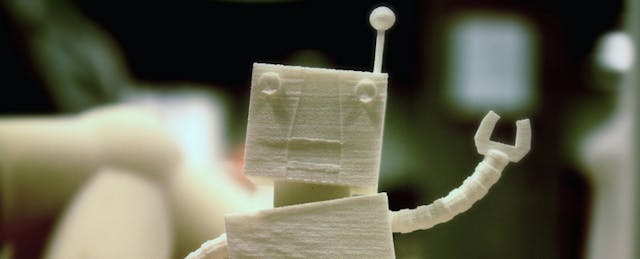I’ve always been a Maker of sorts, although not always of the highest quality or skills. I built tree forts as a kid with salvaged lumber, bicycles from old parts and even a metal detector from a Radio Shack kit. When my wife and I knew that our first child was on the way, we made some specific decisions about how our home was going to set up to encourage creativity and activity.
The first choice was to agree to no cable or satellite TV. We really wanted to limit the attractiveness of the TV and also keep the kids away from the incessant commercialization that TV fosters. The second choice was to not buy or accept any gaming systems for the kids. This has been the harder choice to live with over time, but sticking with it paid some great dividends.
Now with Riley at 15, we have a well filled MakerSpace with a 3D Printing Lab (that supports three public schools thanks to Abe & Cathy at 3D Systems), a blacksmithing set up for fire arts, a chemistry bench to build rocket motors and a broad range of tools.
What was my “billiard room” is now completely devoted to design and engineering time for herds of students in the 6th through 9th grades (and growing). On any Saturday there will be four to nine students with us designing, 3D printing or exploring other aspects of hands-on “making” that they just cannot do in the public schools. The kids and even their parents seem hungry for the change to create something rather than just buy it. We are committed to doing what we can to make it happen. A number of companies have invested in what Riley wants to bring to the schools and we are doing our best pay that investment forward as fast as we can.
A lot of our family passion for this is reinforced by going to the West Coast Maker Faire. At first the Faire was just as a new “thing” to do. But with each passing year, that “thing” grew into an important and ongoing family event. Being exposed to what people of all ages were doing across the many interests of the Maker Movement fired the boys’ impulse to create and inspired me to invest in equipment like a forge and anvil for fire arts.
This inspiration coupled with the tools and equipment we have been given (and my personal willingness to make BIG mistakes) has given us a place where real creativity and hands-on learning take place, often without any need for teaching (more on that in a future column).
Because we do work with a live forge, 3D printers, and basic chemistry, there’s no avoiding the “is it safe?” question from would-be makers. My firm belief is that nothing in this life is genuinely safe and that kids today are given far too few chances to do things that have both the spark of creativity and the tang of danger (at least a little). We are a culture where chemistry sets no longer include chemicals.
I was fortunate enough to discover William Gurstell’s work in Absinthe & Flamethrowers early on and his mantra about doing dangerous things with reasonable safety is one of the mantras of our lab. Learning what it takes to turn a railroad spike into a knife blade on the anvil? Then you are wearing eye protection, gloves and an apron. Working on KNO3 rocket motors? Then the eye protection is on and we are following careful lab procedure. Working with a very sharp chisel? Then I’m watching.
The kids find this freedom to do things for themselves exhilarating and it often fuels their interest in “how these things work” rather than just how to do them. This is the start of engineering and scientific exploration.
I personally get a huge grin out of watching the “lights come on” for any of the kids who learns a new skill or figures out a new way to do something. One of my 3D design students was able to create a custom handle for my Mattel Vac-U-Form after just couple of sessions and we installed it in the lab so others could make use of the tool more easily.
This is perhaps the most fun I can imagine -- a bunch of kids learning by doing and having a great time together.
Perhaps you don’t have the time and expertise to bring a maker lab to your home or school, but the idea of making starts with unplugging as a consumer and critically interacting with the physical world around us. Start at your local hobby shop and try building that new “must-have” toy, or see which DIY-kits best align with curriculum standards for your next lesson. Making makers starts with making your own mind up about what type of learning really matters.


